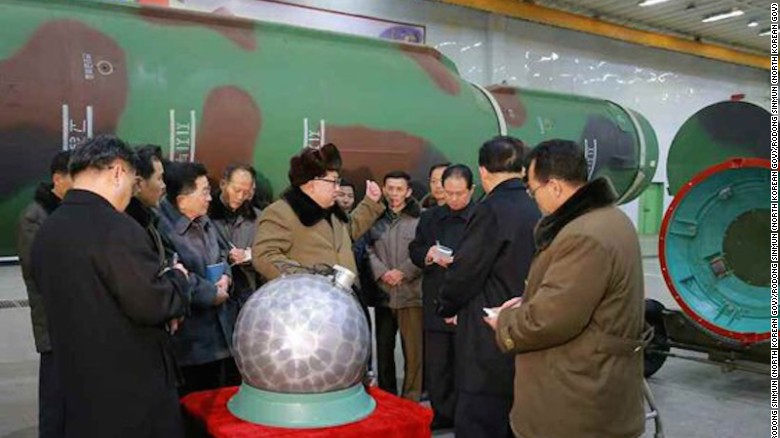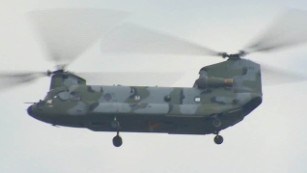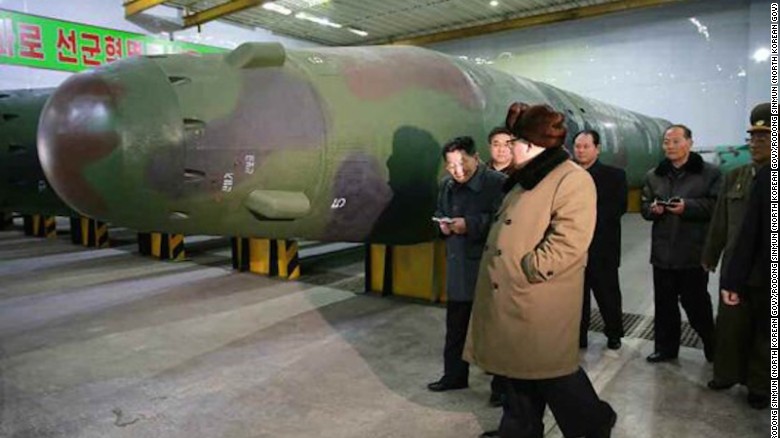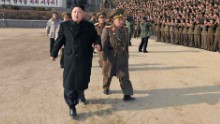North Korea fires two short-range missiles
North Korea fired two short-range ballistic missiles early Thursday from North Hwanghae province, south of Pyongyang, according to a South Korean military statement.
The missiles were fired toward the sea, east off the Korean peninsula, and the South closely tracked the projectiles and is monitoring the situation, the South Korean Joint Chiefs of Staff said.
The launch is the latest saber rattling on the peninsula that roils with tension. The show of force follows a North Korean claim that it has miniaturized nuclear warheads to fit on ballistic missiles, according to the state-run Korean Central News Agency.
Meanwhile, in the South, its military conducts the "largest ever" joint exercises with the United States.
The muscle flexing between North and South occurs a week after the United Nations Security Council imposed broad sanctions against North Korea because of that nation's recent nuclear test and another missile launch, both of which defied current international sanctions.
For now, the South maintains a readiness posture in case of a North provocation, the South military says.
Nuclear warheads
The report about miniaturized nuclear warheads comes after the North reported a successful test of what it said was a hydrogen bomb in February.
State media reported Wednesday that North Korean leader Kim Jong Un met with nuclear scientists and technicians, who briefed him on "research conducted to tip various type tactical and strategic ballistic missiles with nuclear warheads."
The agency also published photographs that appeared to show Kim visiting a facility where the warheads have been made to fit on ballistic missiles -- the first time state media has released images showing its miniaturized weapons technology. CNN cannot independently confirm the photos' veracity or the claims of the KCNA.

North Korean state media released photographs that it claims shows Kim Jong Un inspecting a miniaturized warhead. CNN cannot independently confirm the images.
David Albright of the Institute for Science and International Security told CNN's Brian Todd on Monday that his group thinks the North Koreans had probably already miniaturized a warhead.
A South Korean Defense White Paper from 2014 also noted that its neighbor's ability to miniaturize nuclear weapons seemed, at the time, "to have reached a considerable level."
Expert: Could be nuclear bomb, not a hydrogen one
Karl Dewey, a proliferation expert with IHS Jane's, a military, security and intelligence analysis organization, said the photos suggest that North Korea fit something onto a KN-08 ballistic missile.
"And it is possible that the silver sphere is a simple atomic bomb. But it is not a hydrogen bomb, also known as a thermonuclear bomb," he said, explaining that a thermonuclear device probably would be a different shape because of its two stages.
"Thermonuclear weapons are multistage devices, and the need to place two separate parts -- the primary and secondary -- would give a more oblong-like structure," Dewey said. "As such, the device on the table is unlikely to be a thermonuclear device. It could be a boosted bomb, but that is not a hydrogen bomb by definition."
Pyongyang boasted about having conducted its first hydrogen bomb test earlier this year. But skeptics, including the U.S. government and outside experts, challenged that claim.
While there are concerns about the progress being made, analysts say the reclusive nation does not yet have the ability to launch a strike on U.S. soil.
"They don't have a proven ICBM capability and a warhead that could survive re-entry as I understand it," Bonnie Glaser, senior adviser for Asia at the Center for Strategic and International Studies, told CNN by phone from Tokyo.
"So there are probably some technical difficulties there for hitting the United States.
"The point here is that with every test, the North Koreans are going to learn something and they're going to make progress. And we probably should not underestimate their capability ... if not today, then tomorrow."
Escalation on the peninsula
The tensions heighten once again on the Korean Peninsula, with the United States and South Korea conducting what has been described by a South Korean Defense Ministry spokesman as the "largest ever" joint military exercises, in which around 17,000 U.S. military personnel are participating alongside some 300,000 South Korean troops, according to U.S. Forces Korea.
North Korea on Sunday warned it would make a "pre-emptive and offensive nuclear strike" in response to the joint exercises.
The military spokesman said the two allies were "closely monitoring" signs of North Korean provocation.

New nuclear threat from N. Korea over joint exercises
"As of now, there are no direct signs of provocation, but we are planning to continuously strengthen surveillance," Defense Ministry spokesman Moon Sang-gyun said.
South Korea said it is keeping an eye on the situation with the help of U.S. intelligence authorities.
"South Korean Defense Ministry assesses North Korea, at this point, has not secured the capability of miniaturizing a nuclear warhead nor does it have actual combat capability of KN-08," the ministry said.
Dewey, the Jane's proliferation expert, said that "it's hard to definitively comment" on whether North Korea's KN-08 missile is fully operational, as "North Korea has in the past put weapons systems into service without them being tested." But he said that a 2013 report from the U.S. National Air and Space Intelligence Center put its possible range around 5,500 kilometers (3,420 miles).
Analysts are questioning the wisdom of expansion of the annual exercises at a time when Pyongyang's nuclear ambitions look as advanced as ever seen.
"I didn't see the logic of expanding the exercises," Stephan Haggard, a professor at the School of Global Policy and Strategy, University of California, San Diego, and one of the authors of the North Korea: Witness to Transformation blog, told CNN.
"I personally think that upping the sizes of the (joint U.S.-South Korea military) exercises didn't serve any material function. It's not clear that the size will bring North Korea back to the diplomatic table, so there's no real purpose to do that.
"All you've done is stir the viper's nest. And the North Korean military and the leadership I'm sure is extremely nervous. Because it's coming in the context of the sanctions, and the Chinese are clearly displeased."
The North Korean warning also follows last week's sanctions announced by the 15-member U.N. Security Council, which Pyongyang has denounced as "unprecedented and gangster-like."
Bomb test
Discussions about new sanctions started after North Korea claimed to have successfully tested a hydrogen bomb in January, its fourth nuclear test.
Then, in February, Pyongyang said it had successfully launched an Earth satellite into orbit via the long-range Kwangmyongsong carrier rocket.
How close is North Korea to weaponizing a long-range rocket?
The Security Council called those moves "violations and flagrant disregard" of previous resolutions.

KCNA claims that Kim has visited a facility where warheads had been made to fit on ballistic missiles. CNN cannot independently verify the images accompanying the story.
On Friday, the Korean Central News Agency reported that Kim said his country's "nuclear warheads need to be ready for use at any time."
"Under the extreme situation that the U.S. imperialist is misusing its military influence and is pressuring other countries and people to start war and catastrophe, the only way for our people to protect sovereignty and rights to live is to strengthen the quality and quantity of nuclear power and realize the balance of power," Kim said, according to the KCNA.
This rhetoric came out a day after the news agency reported tests of a new multiple-launch rocket system. This may or may not be referring to a launch of "short-range projectiles" chronicled one day earlier by the South Korean Joint Chiefs of Staff.
Pyongyang has long boasted about its nuclear ambitions, about as long as South Korea and the United States have sought to derail them. The issue has only furthered the isolation of North Korea, a closed-off communist state led for decades by the authoritarian Kim, his late father and his grandfather.
A chief concern is not only that Pyongyang will develop effective nuclear warheads, but that they'll be paired with missiles that can strike targets around East Asia and perhaps beyond.
News Courtesy: www.cnn.com











